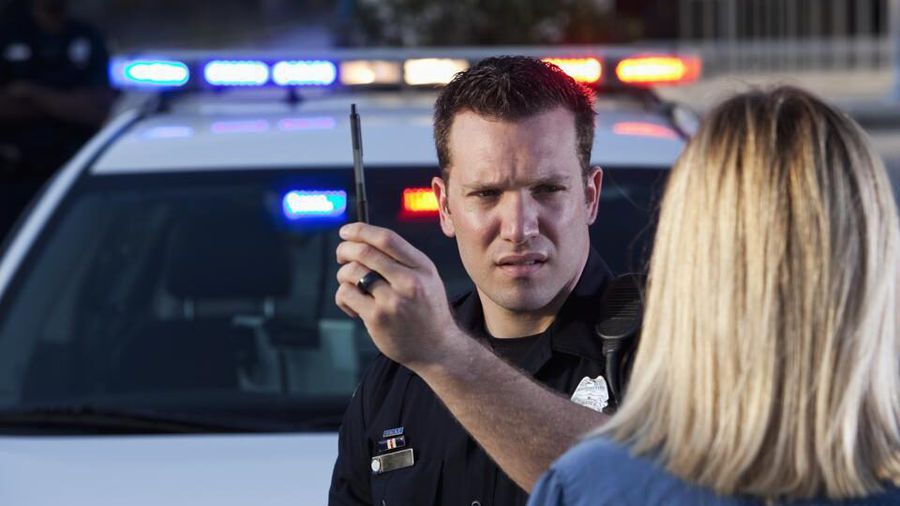In Vermont it is illegal to operate a motor vehicle while under the influence of alcohol at a level of .08 or above. If you have a DWI conviction on your record, you know the profound effects it can have on your daily life and your ability to stay or become employed.
Because a DWI is such a serious offense, there are a number of steps that law enforcement must complete in order to be able to 1) pull you over; 2) ask you to step out of your vehicle; 3) place you under arrest; and 4) charge you with DUI. Below, we will provide you with an outline of the steps that are required by the state in order to properly charge a driver with DWI.
What an Officer MUST do Before They Can Charge a Driver with DWI
To begin, in order to pull you over the officer must have had a reasonable and articulable suspicion that a violation had occurred. The State of Vermont defines a reasonable suspicion as a suspicion, for which an officer can articulate factual reasons, and which does not need to rise to the level of probable cause. In Vermont, “probable cause” occurs where there are “facts or circumstances that would lead a reasonable person to believe that a crime has been committed, or is being committed, or is about to occur.”
There are many, many violations in Vermont for which an officer can pull you over. They include things like speeding, crossing over a double line, having a brake light out, failing to come to a complete stop at a stop sign, or even having a license plate that’s covered in dirt and difficult to read.
Once a driver is pulled over by an officer, in order to be able to ask the driver to exit the vehicle, the officer must have a reasonable suspicion that criminal activity, like driving while impaired, has occurred.
An officer can have a reasonable suspicion that criminal activity has occurred by observing things like slurred speech and watery or bloodshot eyes, noticing the smell of alcohol coming from the driver or the driver’s vehicle, noticing empty or open beer cans in the car, or if the driver has admitted to consuming alcohol that day or evening.
After an officer has asked the driver to step out of the vehicle, he or she will use field sobriety tests to determine if there is probable cause to place the driver under arrest. Many are familiar with a number of the field sobriety tests that are used. They include:
- The walk and turn test where the officer will instruct the driver to walk in a straight line, heel to toe, for a certain number of steps before turning around and walking the same number of steps back.
- The horizontal gaze nystagmus or “HGN” test where the officer will have the driver follow a finger or pen back and forth and up and down while looking for the driver’s eyes to jump or follow along in anything other than a smooth manner.
- The one-leg stand test, where the officer instructs the driver to stand on one foot for a specific period of time.
If the officer feels that the driver has showed enough clues, such as falling over during the one leg test, losing balance during the walk and turn test, or having jumpy eyes during the HGN test, the officer will likely ask the driver to provide a road side breath sample to determine their blood alcohol level. In Vermont, you do have the right to decline to give a breath sample roadside.
Here, if the driver believes they are below a .08 blood alcohol level, providing a road side sample can help convince the officer that the driver is not under the influence and should not be arrested. However, a police officer can still place the driver under arrest even if they blow below a .08 if they feel the driver is under the influence of alcohol.
Once the driver is arrested and brought back to the police station for processing, the officer must read the driver their Miranda rights before beginning to question the driver about things like where they were coming from, how much they had had to drink, and other general questions about the hours leading up to their arrest. The best practice is always to consult with an attorney when an arresting officer provides you with that option.
During questioning, the officer is trying to build a case against the driver by getting them to admit incriminating evidence. It is always the best practice to decline to participate in the interview with the officer.
After the driver’s Miranda rights are read, the officer must also provide the driver with an opportunity to speak with an attorney before they are asked to take an evidentiary breath alcohol test.
It is always a good idea to accept this offer and to speak with an attorney before the driver decides whether or not to provide a sample. The discussion with the attorney is confidential and is not listened to by the police.
At this step, the attorney will likely tell the driver to provide a sample for a straightforward reason – if the driver declines to provide a sample and the officer’s request is later deemed reasonable by the court, the amount of time that the driver’s license will be suspended is doubled.
Once the breath alcohol test is performed, the officer must provide the driver with an opportunity to have his or her own blood alcohol test performed (at a hospital, for example), and provide the driver with a number of locations where such a test can be administered.
If the officer performs all of the steps above, the driver can be lawfully prosecuted for a DWI in Vermont. If you have been arrested for DWI in Vermont, retaining an attorney to review the footage of your arrest can help you determine whether law enforcement properly performed all of the steps above. If the officer fails even one step, an attorney can help you challenge your arrest and possibly have the charges dropped. Even if the officer did perform all of the steps above, an attorney can help with negotiations with the prosecutor to give you the best deal possible.
KRAMER LAW OFFICES: FIGHTING FOR OUR CLIENTS AND THEIR FAMILIES
Our team has built a reputation for compassionate and fierce advocacy on behalf of our clients. If you or someone you know has been charged with DWI, you can reach Kramer Law by calling a 802-257-2221 or using our quick and easy contact form. We are also conveniently located in downtown Brattleboro at 42 Park Place if you would prefer to stop by. We are also happy to discuss your case remotely on Zoom if you wish.
As our client, we will take care of all of the legal, privacy and insurance related issues surrounding your case so that you are able to put your arrest behind you and work towards a better and brighter future.






